A Look into the Making of Swiss Cheese |
|
Although no one is sure when Swiss
cheese was invented, the first mention of the alpine delicacy was by the
Roman historian Phily the Elder who called it Caseus Helveticus, or
"the cheese of the Helvetians", an ancient Swiss tribe. Today, around
450 different kinds of cheese are produced and consumed in Switzerland
making it one of the country's oldest and most vital resources. Here's a look at how traditional Swiss cheese is made, from the pasture to the cherished finished product!
|
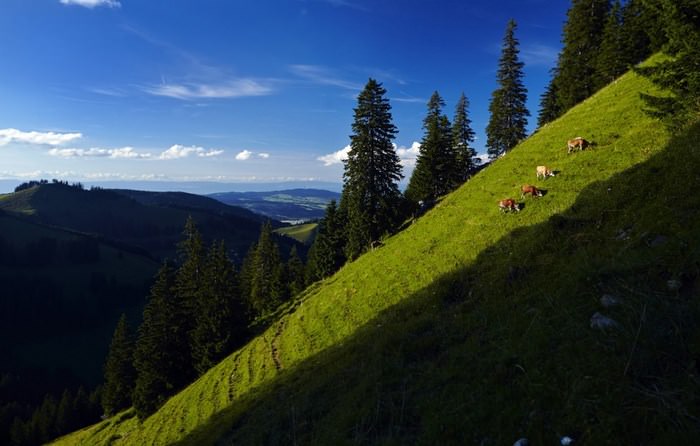 |
| It all begins with the cows. Here the cows are grazing the Swiss summer grass, but in the winter, they are fed hay in order to acheive a flawless final product. |
|
|
 |
| The cows are led by their herdsmen to the cowshed to begin the milking process. |
|
|
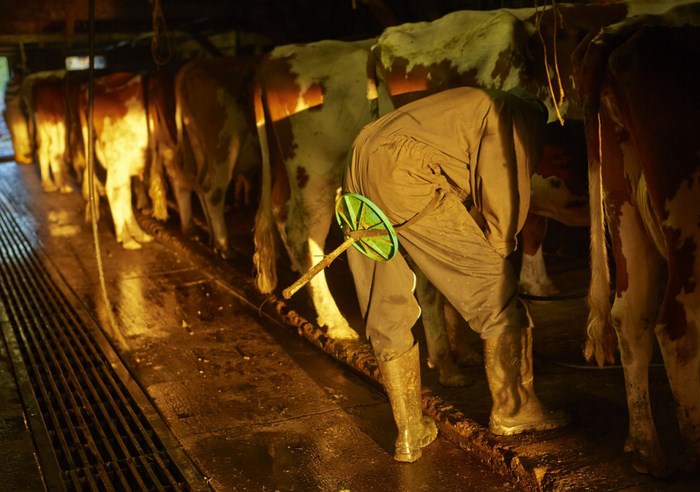 |
| The diary farmer milks the cows, with a stool attached to his bottom for when he needs a moment of rest. It takes about 10 liters of milk to make one kilogram of cheese. |
|
|
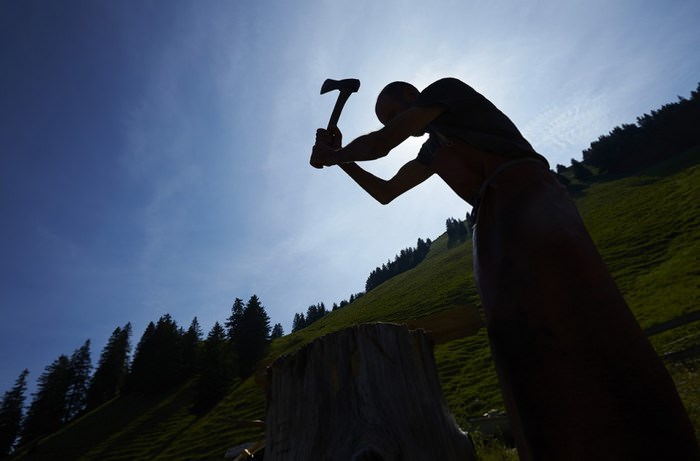 |
| Cutting the wood for the fire that will heat the milk and begin the cheese-making process. |
|
|
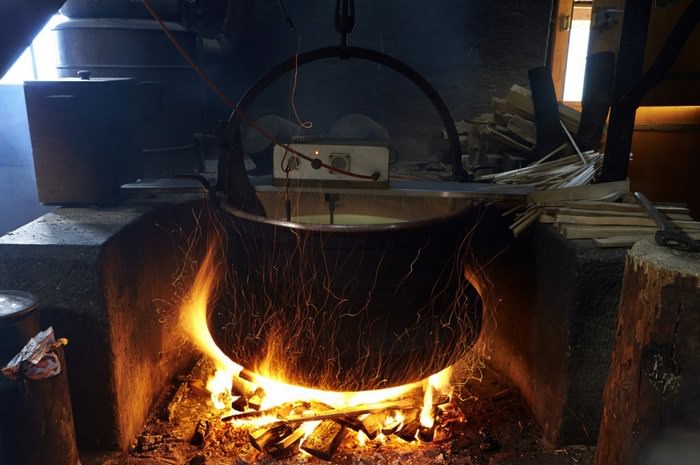 |
| The cauldron is heated to 32 degrees Celsius or 90 degrees Fahrenheit while it is occasionally stirred. Once the milk has reached the needed temperature, it is transfered to a larger container where the fermenting agents will be added. |
|
|
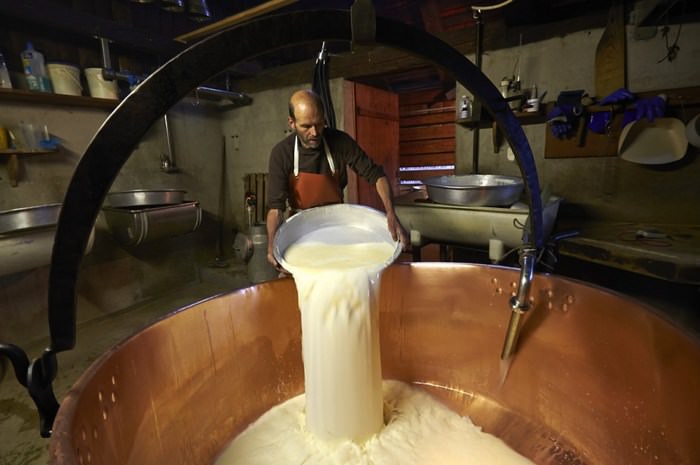 |
| Here rennet, taken from the stomach lining of cows, and a fermentation culture are added to the milk and stirred together. These ingredients turn the milk into a coagulated mass of curds, which contain the essential cheese-making bacteria. |
|
|
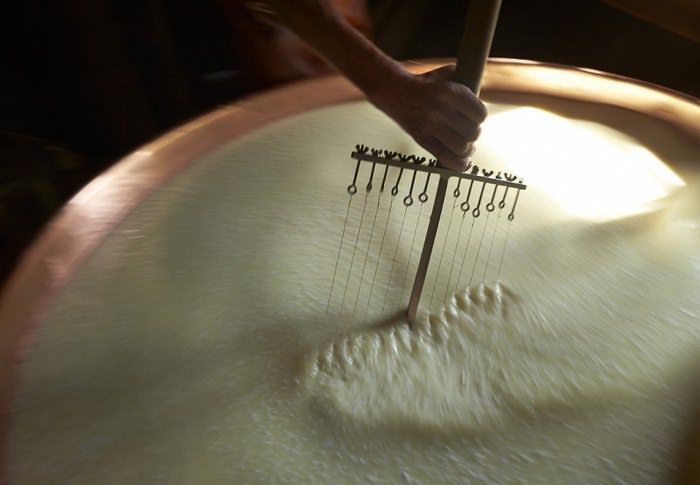 |
| Next the curds are cut up and stirred with this instrument called a 'cheese harp', which also separates out the whey leaving the rest in small granule shapes. The size of the granules will determine the kind of cheese, so that the larger they are, the more liquid remains and the softer the cheese will be. |
|
|
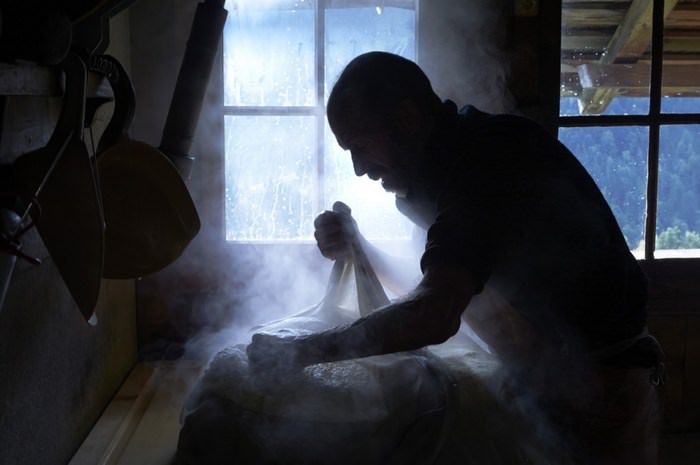 |
| Here the granules are put into a mould which is pressed in order to remove even more liquid. |
|
|
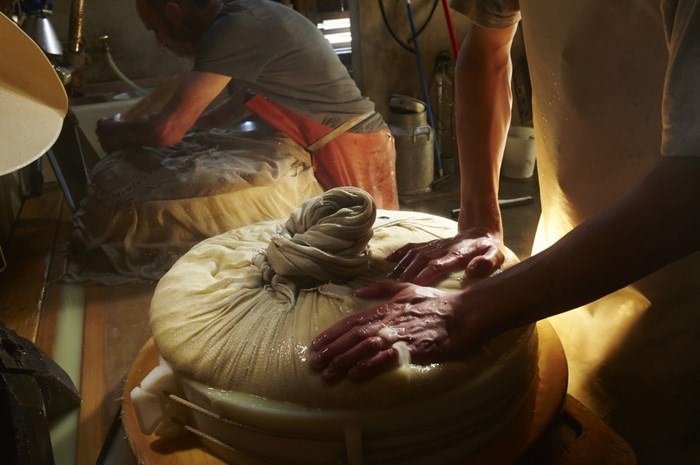 |
| Still pushing the cheese into the mould to remove excess liquid. |
|
|
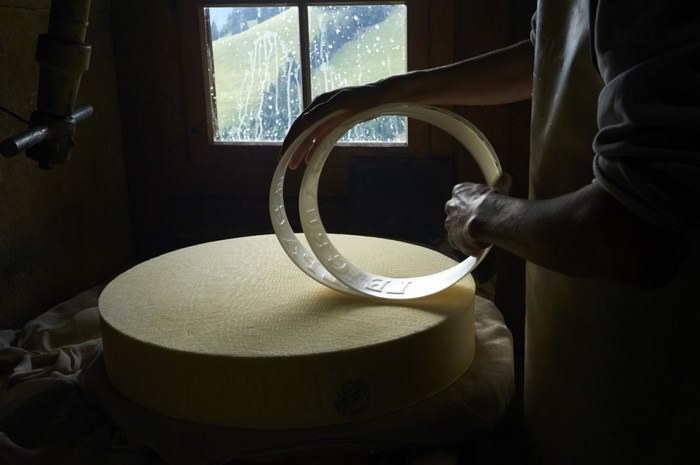 |
| The cheese is nearly a finished product. The seal of the diary farm is pressed into the sides of the wheel so that the cheese can be traced back to its manufacturer. Finally, the cheese is removed from its mould after a day and it is placed in a salt bath. |
|
|
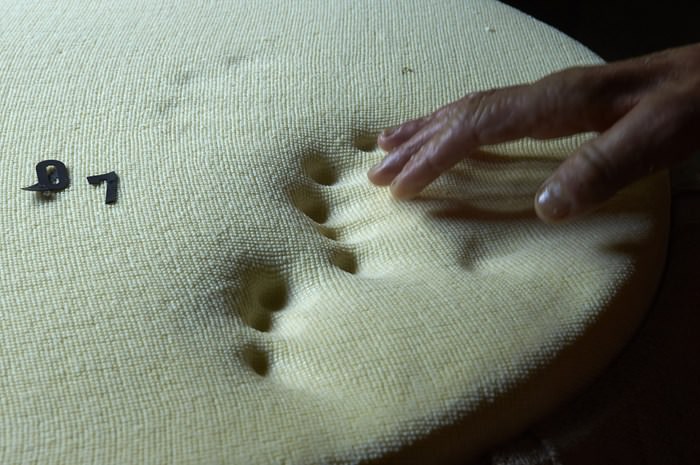 |
| The recipe for the cheese salt bath is a closely guarded secret because it helps form the brine of the cheese, which gives it its unique aroma. The cheese remains in the bath for about two hours if it is soft, or 3 days if it is a harder cheese. |
|
|
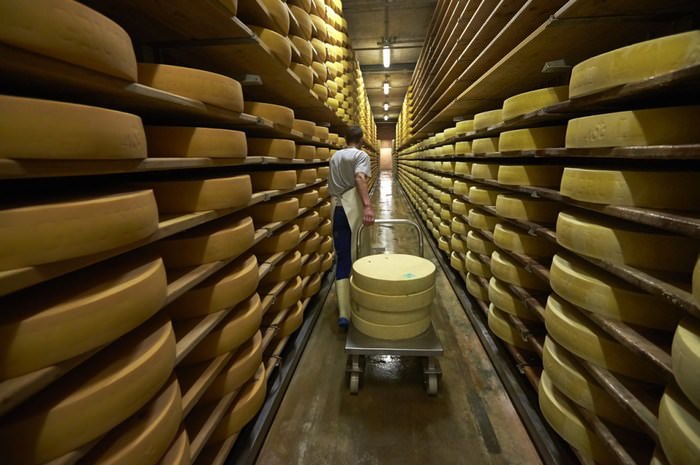 |
| The last stage is the maturing process. The cheeses are kept in facilities with humidity levels of over 90 percent at controlled temperatures. Although it seems that the cheese is at rest, their natural fermentation process continues, and they are continuously rubbed with brine and turned over. The entire maturation period depends on the cheese, but it can take anywhere from a few weeks for soft cheeses to several months for harder cheeses. |
|
|
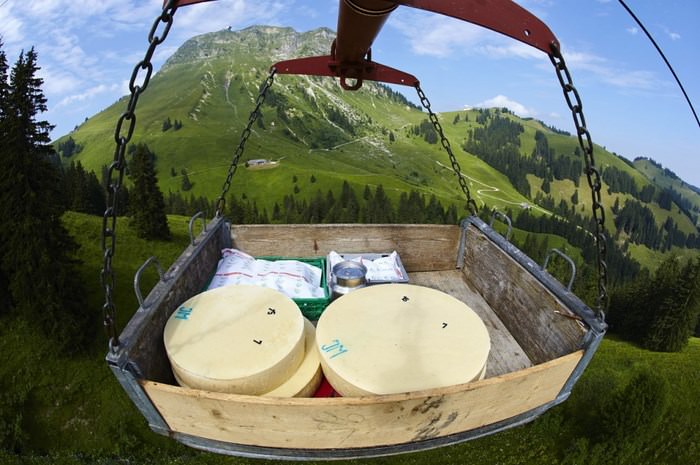 |
| The unique and traditional taste of Swiss cheese, known as Vacherin Mont d'Or, is the result of placing the cheese wheels in a pine box in the open air to ripen. Vacherin is produced between September and April because the farmers do not have enough milk to produce other larger wheels of cheese in the winter months. |
|
|
 |
| A Swiss herdsman walking with this decorated cows back to pasture. |
|
|
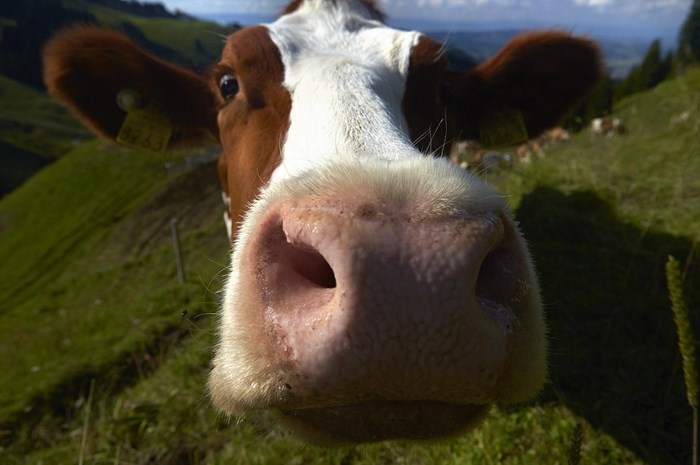 |
| The End: a happy Swiss cow ready to do it all again! |
|
|
jeudi 11 septembre 2014
A Look into the Making of Swiss Cheese
Inscription à :
Publier les commentaires (Atom)
Aucun commentaire:
Enregistrer un commentaire